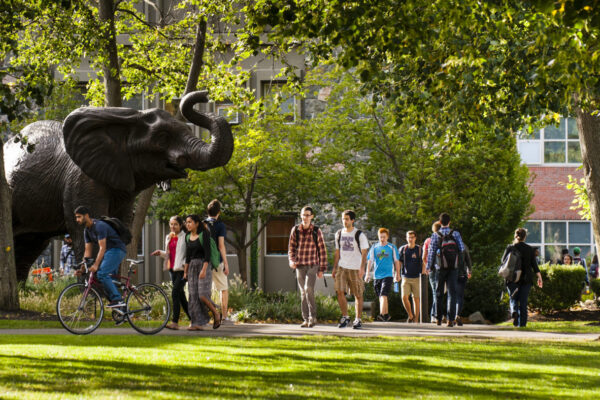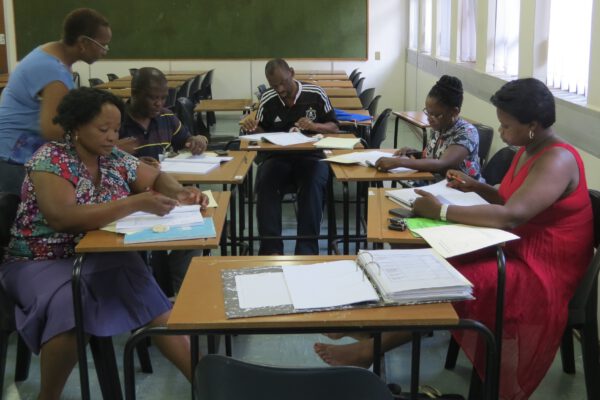By Brian N. Stiegler

In May 2016, during the Democratic presidential primary contest in California, Hillary Clinton expressed concern about the number of international students in public comprehensive universities in the state. “We have got to get back to using public colleges and university for what they were intended,” Clinton said. “If it is in California, for the children in California. If it is in New York, for the children in New York.”
Clinton’s comments emerged from a larger narrative about affordability and access in public higher education. They likely did not reflect any doubts she had about the importance of international student mobility and global exchange, themes Clinton has championed for many years.
Still, her comments underscore a narrative that many international education leaders in public comprehensive universities struggle daily to combat. Public comprehensive regional universities, the narrative goes, were created to serve their geographic region of their state and should focus on that mission. If there are any resources left over, they can be used for internationalization. Often, there is little left over. Internationalization is left to the flagship research-intensive state universities, which have a clear global mission in their research, and private colleges and universities, which have global agendas embedded in missions determined by their boards of directors, religious affiliations, institutional histories and traditions.
The obvious question is, how is the American public comprehensive university supposed to serve our province and not become provincial?
It would be difficult to find a president or provost at a public comprehensive regional university who did not speak the right words about the importance of international education. But when it comes to tough decisions about designating funds, physical space, staffing or intellectual energy at institutions in which resources are always scarce, international education often comes in somewhere near the back of the pack of priorities.
At Salisbury University, a mid-sized public comprehensive regional university located in rural coastal Maryland and constituent member of the University System of Maryland, we are struggling to overcome this narrative. The past decade has been a transformational time for our institution. We have tripled the number of international students on campus, quadrupled the number of study abroad students, have been designated to sponsor the J-1 visa and started a global scholar mobility program that has brought dozens of visiting faculty, artists and intellectuals from around the world. We have added instruction in four lesser-taught foreign languages on campus (Japanese, Chinese, Korean and Arabic) and created five interdisciplinary regional studies minors. In short, in the past decade we have become a global institution.
Yet still we struggle with this narrative. We have joined the ACE Internationalization Laboratory to try to address this creative challenge of how we define ourselves. We did not seek ACE’s help to learn how to “do” comprehensive internationalization. We are already doing it beautifully. We need ACE’s help to teach us to talk about ourselves in terms of the world, not just our provincial back yard. How can we begin to talk about ourselves as one of the largest and most important global organizations in our region of our state? How can we talk to ourselves, to our students, to our alumni and to our legislators about our role as a university firmly rooted in our local community but with a global reach? If we did begin to talk about ourselves that way, how would it change our campus community, our teaching and learning, our priorities, our budget?
The case of the opening for educational exchange with Cuba is a fascinating test case of the narrative.
Salisbury University is one of many American universities pursuing opportunities for new partnerships with universities in Cuba in the wake of former President Barack Obama’s restoration of diplomatic relations with the island nation in July 2015 and subsequent visit in February 2016. After making two small but strategic visits from university leaders to Cuba during the last year, we have successfully executed a memorandum of understanding with a new university partner in Cuba—the University of Matanzas.
Like Salisbury University, our new Cuban university partner is outside the major metropolis. We both struggle for resources; we both care deeply for the development of our local region; we both educate many local teachers, small business owners, artists, environmental and social activists and public servants; we both truly teach the people. As our universities begin to collaborate, we will continue to pursue our good work in our provincial regions. Through our new partnership, we will be mindful of one another, we will support one another, and we will build bridges between our non-elite, often-overlooked, provincial, university learning communities.
Might this kind of partnership between public regional universities be the key to affecting a public discourse that is more open to the perspective of the global Other? Might our national leaders find it harder to depict the foreign Other as the enemy if the good people of their non-cosmopolitan provinces study with each other, visit each other, and learn from one another? Salisbury University is trying. In addition to Cuba, we are trying in the interior provinces of China; we are trying in the coastal provinces of Colombia; we are trying in the often-forgotten Myanmar. We are trying: province to province, people to people, outside global metropolises.
Europe and the United States are living through a moment in which large parts of the population feel sincere and deep anxiety about their place in the world. Immigration has frightened millions. Many are afraid that their language, religion and culture are under siege from global forces. Millions have lost the confidence that the global economy holds any place for them.
In this time of sincerely felt anxiety about the world, public regional higher education must be more global, not less. More than 60 percent of all Americans in higher education attend public comprehensive universities. If we want to teach more future leaders, members of the workforce, and citizens to engage constructively with the world, they must learn at public regional universities that define themselves by their global engagement.
With the help of the ACE International Laboratory, Salisbury University is striving to define itself as a global organization with reach from coastal Maryland to the world. We urge our fellow public comprehensive regional sister universities to take up the task as well. Our shared provincial world depends on our success.
If you have any questions or comments about this blog post, please contact us.

